
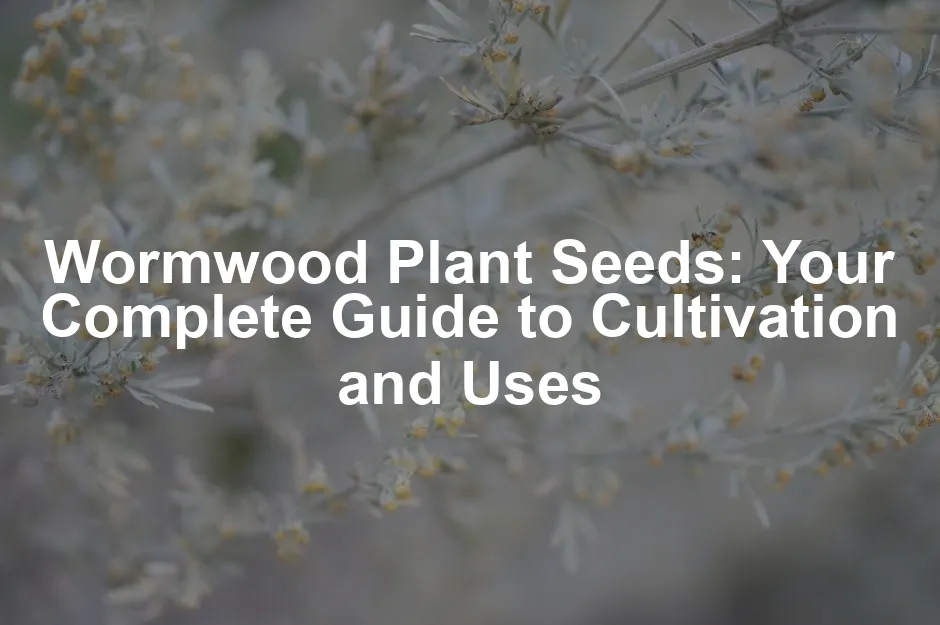
Wormwood Plant Seeds: Your Complete Guide to Cultivation and Uses
Introduction
Wormwood, scientifically known as Artemisia absinthium, is a fascinating plant. It’s valued in both gardening and herbal medicine. This guide focuses on wormwood seeds, how to cultivate them, and their various uses. Whether you’re a seasoned gardener or a beginner, understanding wormwood can enhance your herbal repertoire.
Summary and Overview
Wormwood is a hardy perennial herb from the Asteraceae family. Its striking grey-green leaves and tall stature make it a unique addition to any garden. Historically, wormwood has been used for medicinal purposes and as a natural insect repellent. Its leaves contain compounds that deter pests, making it a favorite among organic gardeners. Wormwood seeds are crucial for anyone looking to grow this versatile plant. In this article, we will cover its characteristics, cultivation methods, and diverse applications, from pest control to herbal remedies. You’ll gain insights into the benefits of incorporating wormwood into your gardening practices.
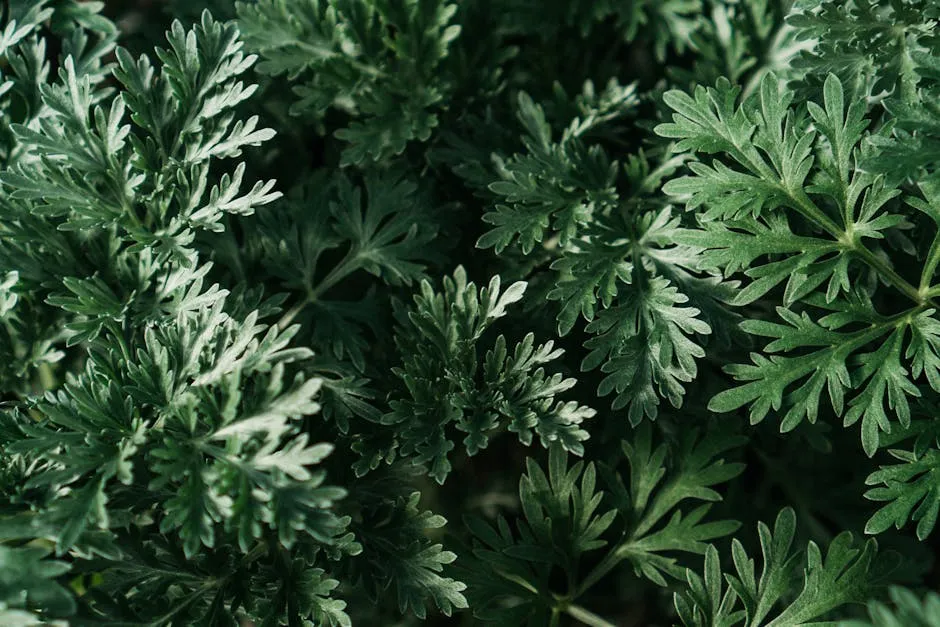
Speaking of growing, if you’re eager to start your own wormwood journey, check out these Wormwood Seeds. They are your first step towards a flourishing herb garden!
Incorporating wormwood into your gardening practices can enhance your pest management strategies. Learn more about organic pest control methods.
Understanding Wormwood
What is Wormwood?
Wormwood, or Artemisia absinthium, belongs to the Asteraceae family. This hardy perennial can reach heights of up to 3-4 feet and spreads about 12 inches. It thrives in full sun or partial shade and prefers well-drained, nitrogen-rich soil.
Wormwood features distinctive grey-green leaves, deeply divided and covered with fine hairs. It’s known for its resilience and unique aroma, which many pests find off-putting. Its average height and spread make it an eye-catching addition to gardens.
Consider adding this remarkable plant to your garden for its beauty and benefits. Wormwood not only enhances your outdoor space, but it also offers practical uses in herbal medicine and pest management. And while you’re at it, don’t forget to wear a good pair of Gardening Gloves to protect those precious hands!
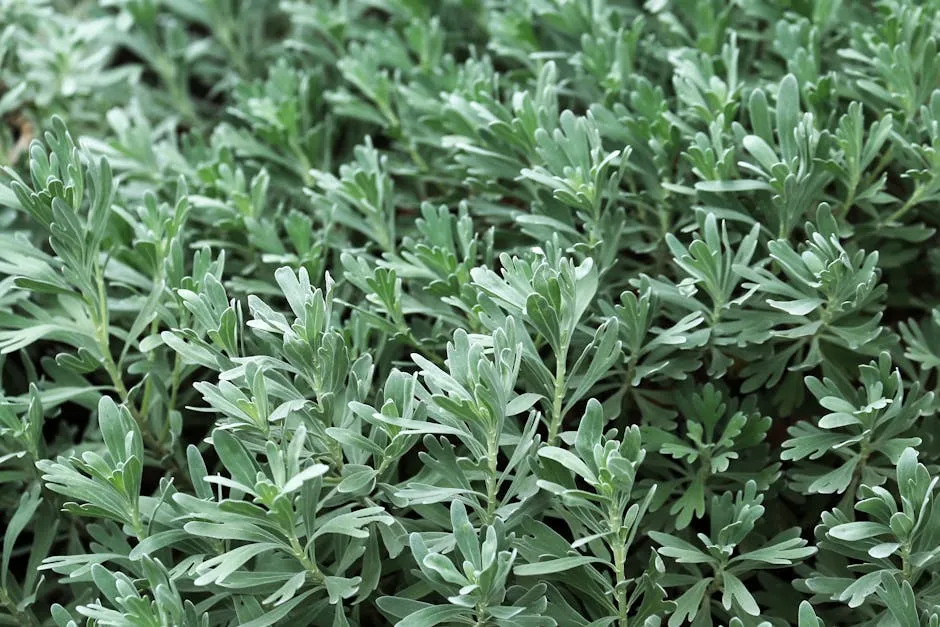
Cultivation of Wormwood Seeds
When and How to Sow Wormwood Seeds
Timing is crucial for sowing wormwood seeds. The ideal periods are late winter to late spring or late summer to autumn. This ensures optimal growth and development.
Start by preparing your soil. Choose a well-drained, nitrogen-rich mix. Sow the seeds at a depth of about 1.5mm (1/16 inch). It’s important not to cover them completely. Wormwood seeds need light to germinate. Keep the soil moist during this process.
The germination time ranges from 10 to 24 days, ideally at around 20°C (68°F). With proper care, you can expect a germination rate of around 70%. Once seedlings emerge, provide them with ample light and moisture.
To ensure healthy growth, keep the seedlings in a warm area. Regularly check the soil moisture, but avoid overwatering. And if you’re serious about your gardening game, a Soil Moisture Meter can be a game-changer for keeping your plants happy!
Transplanting and Care
Transplanting wormwood seedlings is a straightforward task. Wait until they are about 4-6 inches tall. This typically occurs in late spring or early summer.
Spacing is key for healthy growth. Place your seedlings about 30cm (12 inches) apart. This allows them to thrive without overcrowding.
When it comes to care, ensure they receive full sun or partial shade. Water them regularly, but do not let the soil stay soggy.
Pest management is also essential. Wormwood is naturally pest-resistant, but keep an eye out for any unwanted visitors. Regularly inspect the plants for signs of pests or diseases. And if you notice any pests trying to crash your gardening party, a Pest Control Spray Bottle could save the day!
Have fun documenting your wormwood growth journey! We’d love to hear about it.
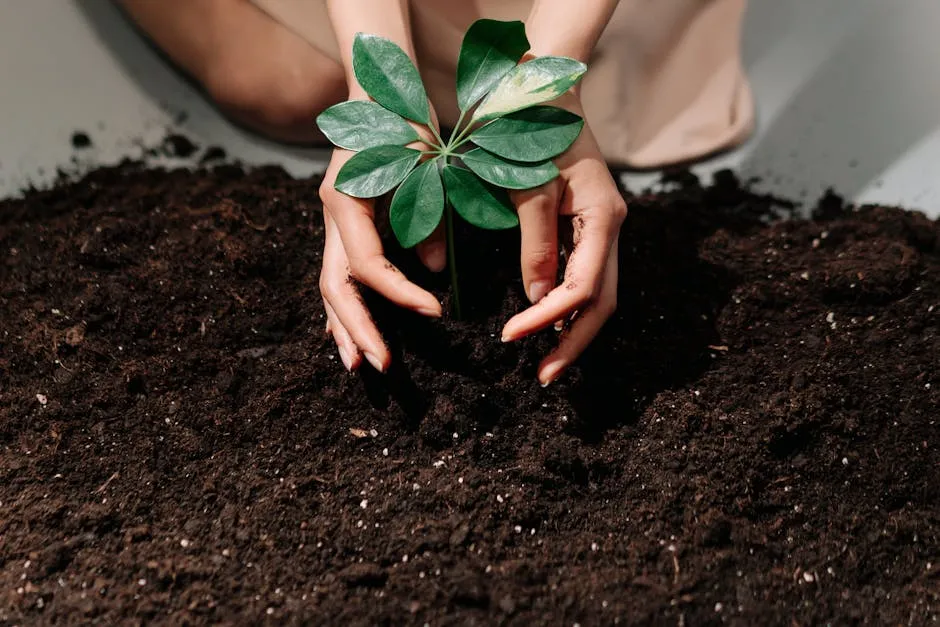
Harvesting and Storage
Best Practices for Harvesting Wormwood
Harvesting wormwood is a rewarding process. The best time to cut it is when the plant is in full flower, usually in the late summer. At this stage, the leaves are packed with essential oils, perfect for various uses.
When harvesting, use sharp scissors or Pruning Shears. Cut the upper portions of the stalks, leaving about six inches for regrowth. Aim for healthy plants, as they yield better quality. On average, each wormwood plant can provide about three to four ounces of dried leaves.
Once harvested, drying is crucial. Air drying is the most effective method. Bundle the stems and hang them upside down in a cool, dark area with good airflow. This will help preserve the plant’s essential oils and flavors. After a week or so, check for dryness. The leaves should be crispy but not brittle.
For storage, choose airtight glass containers. A dark, dry place is ideal to keep the leaves fresh. Avoid plastic bags, as they can trap moisture and lead to mold. Properly stored, dried wormwood can last up to one year.
You can use your harvested wormwood in teas, tinctures, or as a natural insect repellent. Have you tried harvesting your own herbs? Experiment with wormwood and share your experiences!

Uses of Wormwood
Medicinal and Culinary Applications
Wormwood has a rich history in herbal medicine. It’s been used for centuries, particularly for digestive issues. The plant contains compounds that may aid digestion and stimulate appetite.
Today, many enjoy wormwood in teas and tinctures. These preparations harness its benefits, offering a unique flavor profile. Nutritionally, wormwood is known for its anti-inflammatory and antioxidant properties.
However, caution is necessary. Wormwood contains thujone, which can be toxic in large amounts. Always consult a healthcare professional before using it as a remedy. If you’re serious about your herbal education, check out this Herbal Medicine Book for more insights!
Historically, wormwood has been recognized in herbal medicine. Ancient cultures utilized it for various ailments, showing its long-standing importance.
If you’re interested in herbal remedies, consider exploring wormwood further. It could be a valuable addition to your toolkit!

Pest Control and Companion Planting
Wormwood is a powerful ally in organic pest control. Its natural compounds repel many garden pests. In fact, studies show wormwood can reduce pest populations by over 50%. This makes it a top choice for eco-friendly gardeners. For those looking to enhance their gardening techniques, check out companion planting strategies.
Implementing companion planting can enhance your garden’s health and yield. Discover effective strategies for companion planting.
Companion planting enhances garden health. Wormwood pairs well with plants like carrots and onions. Its aroma confuses pests like the carrot rust fly. Planting wormwood at the edges of your garden can create a protective barrier.
You can also make homemade pest sprays using wormwood. Here’s a simple recipe:
- Simmer 8 oz of wormwood leaves in four pints of water for 30 minutes.
- Strain the mixture and let it cool.
- Add a few drops of Castile Soap to help the spray adhere to leaves.
Always label the spray as toxic and keep it away from children and pets.
Implementing these pest control techniques can transform your garden. So why not give it a try? You might be amazed at the results!
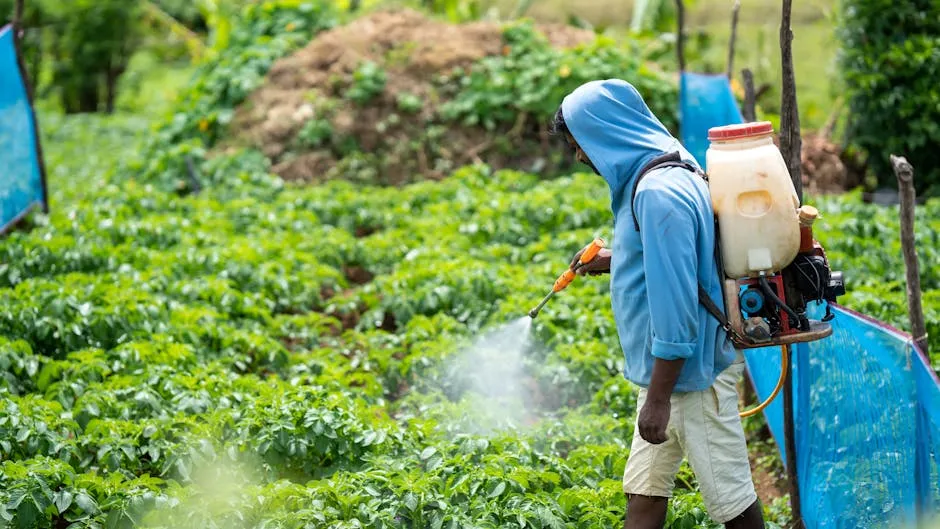
FAQs
What are the best conditions for growing wormwood seeds?
Wormwood seeds thrive in full sun or partial shade. They prefer well-drained, nitrogen-rich soil. Ensure the soil remains moist but not soggy during germination.
How long do wormwood seeds take to germinate?
Wormwood seeds typically germinate in 10 to 24 days. Factors like temperature and moisture levels can influence this time frame. Aim for around 20°C (68°F) for optimal results.
Can wormwood be used in cooking?
Yes, wormwood can be used in cooking, notably in herbal teas and bitters. However, use it sparingly due to its potent flavor and potential toxicity in large amounts.
Is wormwood safe for pets and children?
Wormwood is toxic to pets and children. It’s crucial to handle it with care and keep it out of reach. Always educate others about its safety precautions.
How can I use wormwood for pest control?
You can make a simple pest spray by simmering 8 oz of wormwood leaves in four pints of water for 30 minutes. Strain the mixture, let it cool, and add Castile soap to enhance adherence. Always label and store it safely.
Please let us know what you think about our content by leaving a comment down below!
Thank you for reading till here 🙂 And while you’re gearing up for your next gardening adventure, consider picking up some Gardening Books to expand your knowledge and skills!
All images from Pexels



